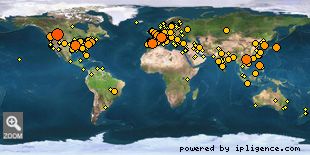 » NMR Jobs
» NMR Jobs |
|
|
|
|
|
|
 » Cool papers
» Cool papers |
|
|
|
|
|
|
 » NMR books
» NMR books |
|
|
|
|
|
|
 » NMR theses
» NMR theses |
|
|
|
|
|
|
 » NMR blogs
» NMR blogs |
|
|
|
|
|
|
 » NMR news
» NMR news |
|
|
|
|
|
|
 » NMR tweets
» NMR tweets |
|
|
|
|
|
|
 » NMR videos
» NMR videos |
|
|
|
|
|
|
 » NMR pictures
» NMR pictures |
|
|
|
|
|
|
 » Online Users: 251
» Online Users: 251 |
| 0 members and 251 guests |
| No Members online |
| Most users ever online was 1,278, 01-09-2024 at 07:38 AM. |
|
 » Welcome!
» Welcome! |
Welcome, NMR world!

Our visitors map.
|

 1H-detected characterization of carbonā??carbon networks in highly flexible protonated biomolecules using MAS NMR 1H-detected characterization of carbonā??carbon networks in highly flexible protonated biomolecules using MAS NMR |
|
Jun 09, 2023 - 12:04 PM - by nmrlearner
|
 1H-detected characterization of carbonā??carbon networks in highly flexible protonated biomolecules using MAS NMR
1H-detected characterization of carbonā??carbon networks in highly flexible protonated biomolecules using MAS NMR
Abstract
In the last three decades, the scope of solid-state NMR has expanded to exploring complex biomolecules, from large protein assemblies to intact cells at atomic-level resolution. This diversity in macromolecules frequently features highly flexible components whose insoluble environment precludes the use of solution NMR to study their structure and interactions. While High-resolution Magic-Angle Spinning (HR-MAS) probes offer the capacity for gradient-based 1H-detected spectroscopy in solids, such probes are not commonly used for routine MAS NMR experiments. As a result, most exploration of the flexible regime entails either 13C-detected experiments, the use of partially perdeuterated systems, or ultra-fast MAS. Here we explore proton-detected pulse schemes probing through-bond 13Cā??13C networks to study mobile protein sidechains as well as polysaccharides in a broadband manner. We demonstrate the use of such schemes to study a mixture of microtubule-associated protein (MAP) tau and human microtubules (MTs), and the cell wall of the fungus Schizophyllum commune using 2D and 3D spectroscopy, to show its viability for obtaining unambiguous correlations using standard fast-spinning MAS probes at high and ultra-high magnetic fields.
Source: Journal of Biomolecular NMR
|

 0 Replies | 176 Views
0 Replies | 176 Views
|
|
 » BioNMR wiki
» BioNMR wiki |
|
|
|
|
|
|
 » NMR discussion
» NMR discussion |
|
|
|
|
|
|
 » NMR conferences
» NMR conferences |
|
|
|
|
|
|
 » NMR software
» NMR software |
|
|
|
|
|
|
 » Pulse sequences
» Pulse sequences |
|
|
|
|
|
|
 » NMR community
» NMR community |
|
|
|
|
|
|
 » NMR presentations
» NMR presentations |
|
|
 » NMR web resources
» NMR web resources |
|
|
|
|
|
|
 » NMR feature requests
» NMR feature requests |
|
|
 » NMR bookmarks
» NMR bookmarks |
|
|
|
|
|
|
 » Stats
» Stats |
Members: 3,202
Threads: 25,753
Posts: 26,139
Top Poster: nmrlearner (23,197)
|
| Welcome to our newest member, bpadmanabhan |
|



